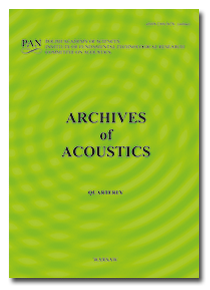Archives of Acoustics,
37, 3, pp. 341–347, 2012
Influence of MoO3 on the Structure of Lithium Aluminum Phosphate Glasses
IR spectroscopy, density and ultrasonic velocity measurements have been carried out for aluminum
lithium phosphate glasses with and without MoO3. The observed changes in the FTIR spectra of the
glasses were related to the modifier/former role of molybdenum ions. The results revealed that the density
increases with increasing MoO3 content, which was attributed to the increase in the compactness and
packing of the glass network. The ultrasonic data were analyzed in terms of creation of new bonds of MoO3
attached to phosphate units. The new bonds increased the average crosslink density and the number of
network bonds per unit volume along with a strengthening of the different modes of vibrations which in
its turn increased the ultrasonic velocity, the rigidity and hence the elastic moduli of the glasses.
lithium phosphate glasses with and without MoO3. The observed changes in the FTIR spectra of the
glasses were related to the modifier/former role of molybdenum ions. The results revealed that the density
increases with increasing MoO3 content, which was attributed to the increase in the compactness and
packing of the glass network. The ultrasonic data were analyzed in terms of creation of new bonds of MoO3
attached to phosphate units. The new bonds increased the average crosslink density and the number of
network bonds per unit volume along with a strengthening of the different modes of vibrations which in
its turn increased the ultrasonic velocity, the rigidity and hence the elastic moduli of the glasses.
Keywords:
phosphate glasses; IR, density; elastic properties
Full Text:
PDF
Copyright © Polish Academy of Sciences & Institute of Fundamental Technological Research (IPPT PAN).





